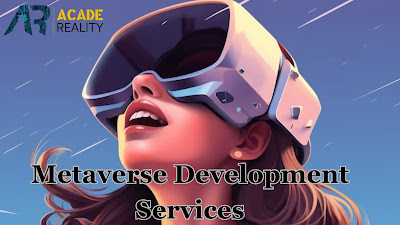Unlocking New Frontiers of Learning with Virtual Reality in Education
In recent years, the rapid advancements in technology have opened up a world of new possibilities for education. One such innovation that is revolutionizing the way we learn is virtual reality (VR). With its immersive and interactive nature, VR Education Company has the potential to transform traditional classrooms into dynamic, engaging, and experiential learning environments. Let's explore how Virtual Reality or Augmented Reality for Education is unlocking new frontiers of learning and discuss its impact on education.
 |
| VR in Education |
1. Immersive Experiences:
Its ability to provide immersive experiences. By putting on a VR headset, students can transport themselves to any location, period in history, or even a fictional world. They can explore ancient ruins, dive into the depths of the ocean, or participate in historical events - all without leaving the classroom. This level of immersion enhances students' engagement, making learning more enjoyable and memorable.
2. Hands-on Learning:
Virtual reality allows students to engage in learning experiences without expensive equipment or resources. For example, in a science class, students can dissect a virtual frog or conduct experiments in a virtual laboratory. These interactive simulations not only make learning more accessible but also reduce the risks associated with traditional experiments, creating a safer learning environment.
3. Personalized Learning:
Every student learns at their own pace and has unique learning preferences. VR technology empowers educators to customize learning experiences based on individual needs. By tailoring lessons to suit different learning styles, educators can ensure that every student benefits from the educational content delivered through virtual reality. This personalized approach increases student engagement and fosters a deeper understanding of the subject matter.
4. Fostering Critical Thinking and Problem-Solving Skills:
Virtual reality helps students develop critical thinking and problem-solving skills by presenting them with realistic scenarios that encourage decision-making and evaluation in a safe and controlled environment.
5. Overcoming Geographical Barriers:
A significant advantage of virtual reality in education is its ability to overcome geographical barriers. With VR, students can connect with experts, guest speakers, or classmates from around the world, fostering collaboration and cultural exchange. This global connectivity enriches the learning experience, exposing students to diverse perspectives and expanding their horizons.
6. Removing Learning Constraints:
Traditional education often faces constraints due to limited resources, time, or physical barriers. VR technology eliminates these constraints by providing limitless possibilities for learning. Students can visit museums, art galleries, or historical landmarks that may otherwise be inaccessible. It opens up a whole new world of educational opportunities, enabling students to learn about different cultures, languages, and historical events in a more immersive and meaningful way.
For more queries please contact with us: https://www.acadereality.com/contact-us/
Conclusion:
Virtual reality has the power to transform education by unlocking new frontiers of learning. Its immersive experiences, hands-on learning, personalized approach, and ability to foster critical thinking skills position it as a valuable tool in modern-day classrooms. Also Augmented Reality in Education enables educators to create immersive learning environments that prepare students for future challenges. As this technology continues to develop, it is essential to harness its full potential to revolutionize education and equip the next generation with the skills they need to succeed in an ever-evolving world.



Comments
Post a Comment